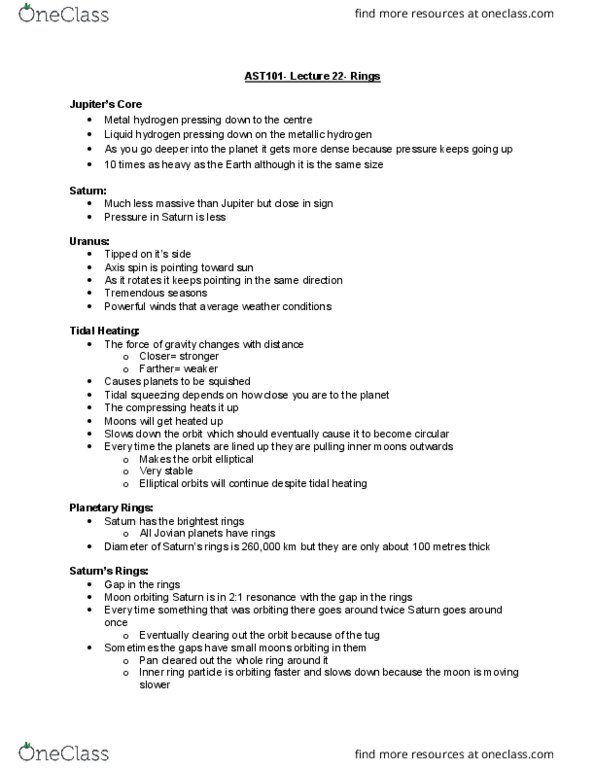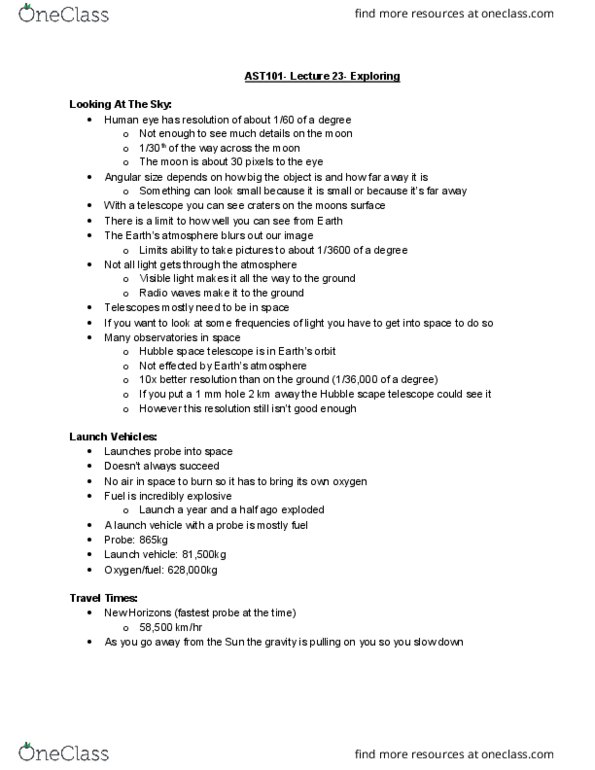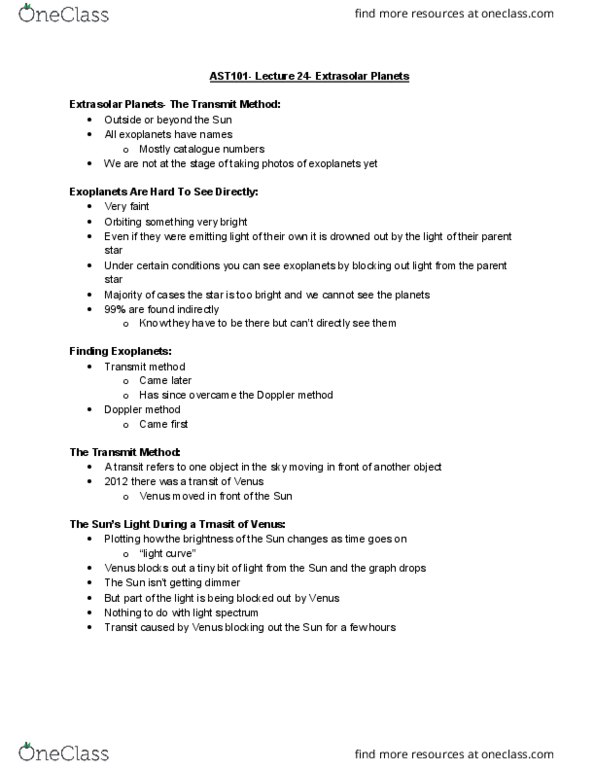AST101H1 Lecture Notes - Lecture 23: No Air, Human Eye, Vega 1
AST101H1 verified notes
23/26View all
Document Summary
If you put a 1 mm hole 2 km away the hubble scape telescope could see it. Travel times: new horizons (fastest probe at the time, 58,500 km/hr, as you go away from the sun the gravity is pulling on you so you slow down. Communication time: distances are so large, light travels at the speed of light. Communications: voyager has a dish to beam the signal back to earth, dishes on earth receive the weak signal and send back replies, dishes are facing each other, deep space network that space probes use to communicate. Missions to venus: has a thick atmosphere so you can use a parachute, lander is harder than orbiter, launch it, get to the planet, slow down, land, survive, send back data. Sample return mission: hardest exploration mission, you have to launch it, get there, land, collect samples, launch again, and get back to.




